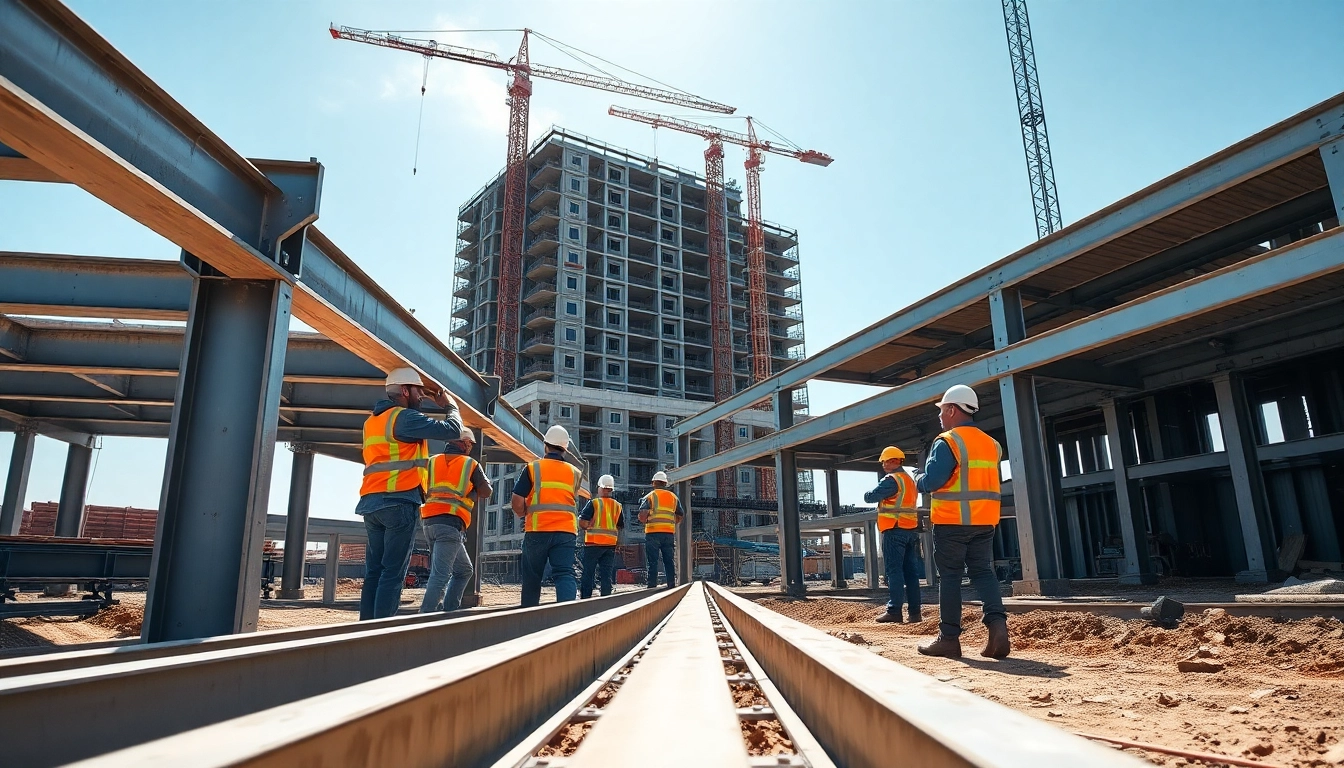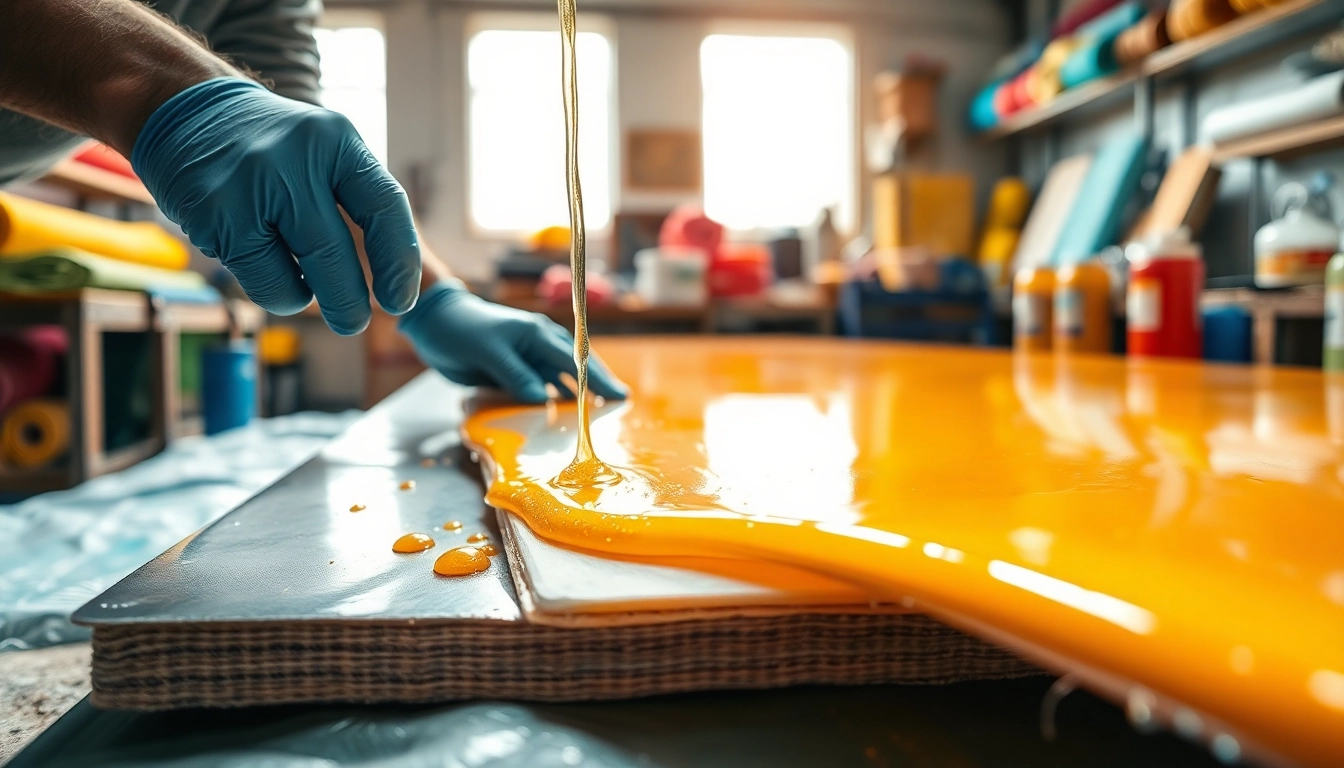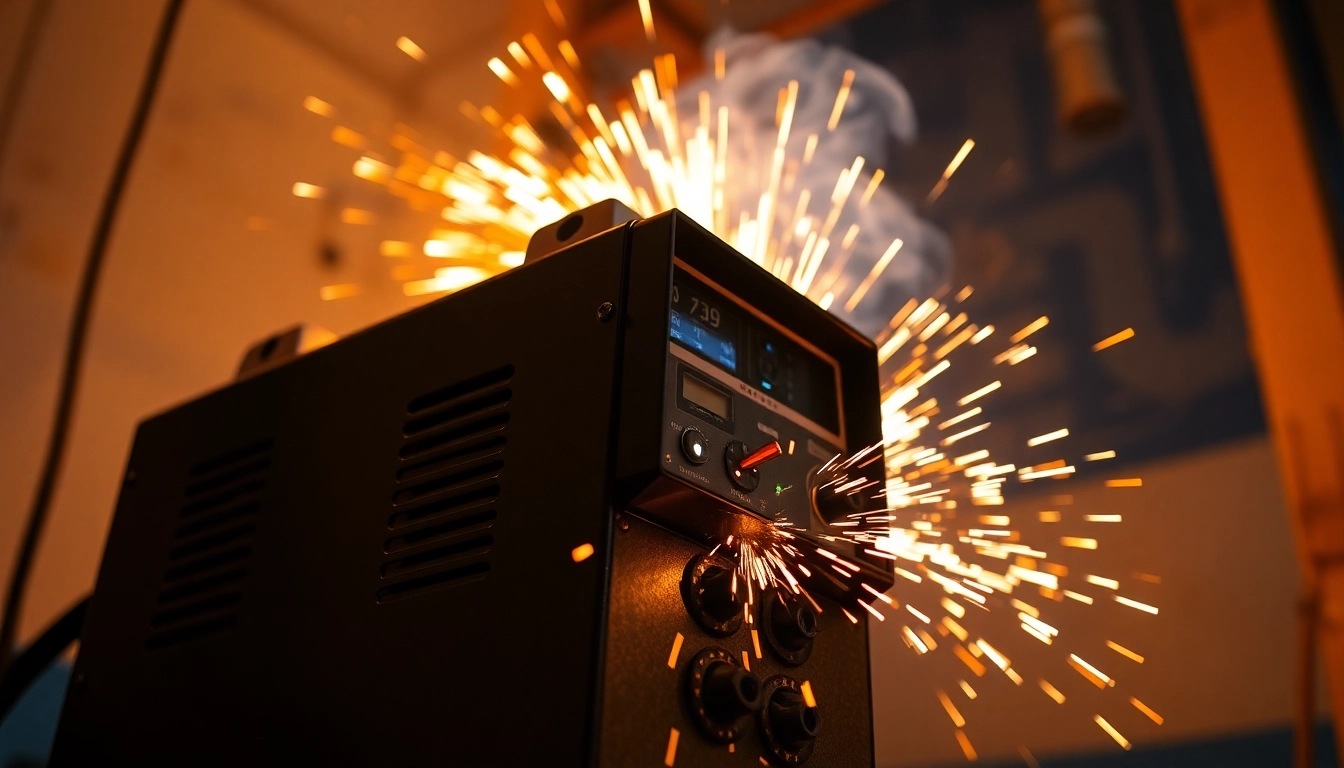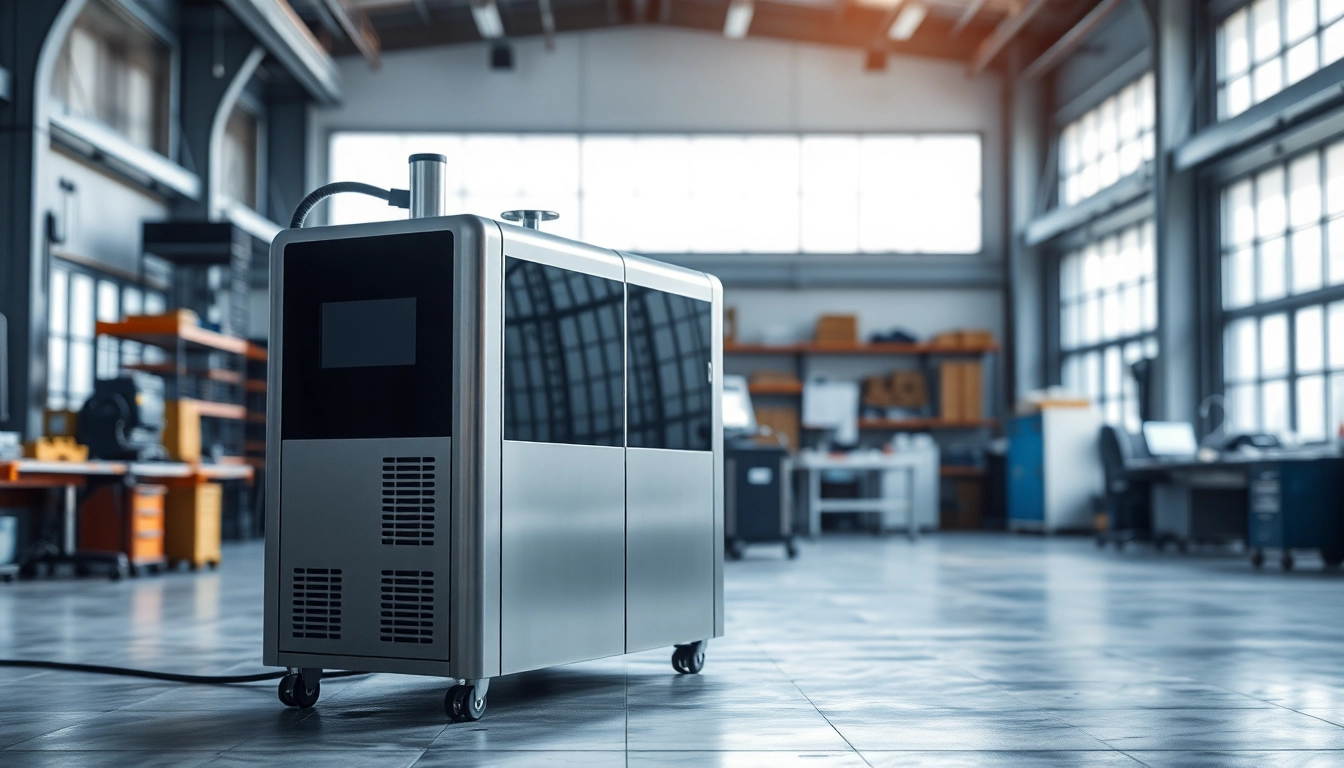Understanding Structural Steel Installation
What is Structural Steel Installation?
Structural steel installation refers to the process of assembling structural steel components to create frameworks and support systems for buildings, bridges, and other structures. This specialized service plays a pivotal role in construction, as it involves not only the physical placement of steel elements but also ensuring they are securely and correctly fixed to provide stability and strength. The process typically includes detailed planning, professional execution, and adherence to safety standards. As a critical segment of modern construction, the structural steel installation process underpins a sustainable, durable, and reliable construction method, forming the backbone of contemporary architecture.
Types of Structural Steel Used in Construction
Several types of structural steel are commonly used in construction, each with unique properties suited for different applications. Here are some of the most prevalent types:
- Wide Flange Beams (W-Beams): These beams have a broad flange that provides high load-bearing capacity and can be found in various structures, including high-rises and bridges.
- Channel Beams (C-Beams): Channel beams are used for lighter loads and can be found in frames, support structures, and signage.
- Tubular Steel: Available in both round and square shapes, tubular steel is known for its strength and aesthetic appeal, often used in architectural frames and railings.
- Angles: Angle steel is characterized by an L-shaped cross-section and is widely employed in bracing, supports, and architectural frameworks.
- Plates: Structural plates can serve multiple purposes, from providing support to functioning as a base for other steel elements.
Understanding the various types of structural steel allows construction professionals and stakeholders to choose the right materials for specific project requirements, ultimately influencing the safety and integrity of the final structure.
Benefits of Structural Steel Installation
The benefits of structural steel installation are numerous, making it a top choice for builders and architects alike. Here are some key advantages:
- High Strength-to-Weight Ratio: Structural steel provides exceptional strength while remaining lightweight, allowing for versatile design options.
- Durability: Steel is resistant to many environmental factors, including pests, fire, and weather conditions, ensuring a long lifespan for the structures.
- Design Flexibility: Steel’s versatility allows for innovative architectural designs, accommodating unique and complex construction projects.
- Cost-Efficiency: While the initial material cost may be higher, the longevity and minimal maintenance requirements of steel structures lead to cost savings over time.
- Faster Construction: Prefabrication methods allow structural steel components to be produced off-site and quickly assembled on-site, speeding up project timelines.
Planning Your Structural Steel Installation
Site Assessment and Preparation
A successful structural steel installation begins with thorough site assessment and preparation. The site must be evaluated for soil stability, load-bearing capacity, and any potential obstacles that may hinder installation, such as existing structures or underground utilities. A well-prepared site not only facilitates a smoother installation process but also enhances safety. Factors to consider during site preparation include:
- Topographical Surveys: Conduct a thorough survey to understand the elevation and contour of the site.
- Soil Testing: Perform soil tests to determine its weight-bearing capacity, informing necessary modifications.
- Accessibility: Plan for the accessibility of heavy machinery and lifting equipment necessary for the installation.
- Environmental Considerations: Assess environmental conditions, including weather patterns and seasonal changes that might impact construction.
Design Considerations for Structural Steel
When planning structural steel installation, design considerations are paramount. Key factors that influence design include:
- Load Requirements: Assess the anticipated loads the structure will support, including dead loads, live loads, and environmental factors.
- Building Codes: Ensure that your designs are compliant with local building regulations and codes to avoid legal complications.
- Integration with Other Materials: Consider how structural steel will interact with other materials in the building, such as concrete or glass.
- Future Modifications: Design with the potential for future expansions or modifications in mind, ensuring flexibility for changes.
Creating an Effective Installation Schedule
An effective installation schedule is crucial for the timely completion of a structural steel project. Factors to consider when creating a schedule include:
- Phase Tasks: Break the installation process into phases, detailing specific tasks and milestones for each phase.
- Resource Allocation: Ensure that labor and machinery are appropriately scheduled and available when needed.
- Timely Inspections: Schedule inspections throughout the installation process to address any issues as they arise, keeping the project on track.
- Contingency Plans: Develop contingency plans for potential delays caused by weather or unforeseen complications.
Safety Measures for Structural Steel Installation
Importance of Safety Protocols
Safety is paramount during structural steel installation due to the significant risks involved. Establishing comprehensive safety protocols helps to minimize accidents and injuries on construction sites. Key safety measures include:
- Risk Assessments: Conduct regular risk assessments to identify potential hazards associated with structural steel installation.
- Site Signage: Use clear and visible signage to alert workers of potential dangers and required safety gear.
- Regular Safety Meetings: Hold ongoing safety meetings to reinforce safety practices and keep all personnel informed of the latest regulations.
Personal Protective Equipment for Workers
Personal protective equipment (PPE) is essential to safeguard workers involved in structural steel installation. Required PPE includes:
- Hard Hats: Protects against falling objects.
- Steel-Toed Boots: Provides foot protection against heavy loads.
- High-Visibility Vests: Ensures workers are seen by construction vehicles and equipment operators.
- Gloves: Protects hands during handling of materials.
- Eye Protection: Guards against dust, debris, and sparks from welding or cutting activities.
Training and Certification for Crews
All personnel involved in structural steel installation must undergo rigorous training and certification to ensure they are knowledgeable about safe practices and installation techniques. Training should include:
- Technical Skills: Instruction on tools, equipment, and installation techniques.
- Safety Protocols: Comprehensive safety training that aligns with OSHA regulations and local laws.
- Emergency Procedures: Training on emergency response measures for accidents or equipment failure.
Implementation of Structural Steel Installation
Step-by-Step Guide to Installation
Implementing structural steel installation involves several systematic steps to ensure accuracy and safety:
- Delivery of Materials: Ensure all structural steel components are delivered on-site and inspected for quality.
- Preparation of the Site: Clear the installation area and ready all required machinery, tools, and safety equipment.
- Layout Verification: Verify the layout against the project blueprints to confirm all dimensions and placement are correct.
- First Placement: Begin by installing the base plates or anchors, ensuring they are level and aligned with design specifications.
- Assembly: Assemble structural components beginning with the lower levels and moving upward; bolts should be tightened progressively to ensure stability.
- Welding and Connections: Carry out necessary welding and bolting in accordance with engineering specifications and safety standards.
- Final Inspections: Conduct thorough inspections to ensure all components are correctly placed and secured before moving to the next phase.
Tools and Equipment Needed
Effective structural steel installation requires a variety of specialized tools and equipment. Essential items include:
- Cranes: For lifting heavy steel components into place.
- Forklifts: To transport materials around the site.
- Welders: For joining steel components together.
- Power Tools: Such as drills and grinders for preparation and finishing touches.
- Measuring Tools: Levels, tape measures, and laser measuring tools are crucial for accuracy.
Common Challenges and Solutions During Installation
While implementing structural steel installation, several challenges may arise. Here are some common obstacles and their respective solutions:
- Weather Delays: Weather conditions can halt construction progress. Have contingency plans in place, such as temporary coverings.
- Supply Chain Issues: Delays in material delivery can impede installation. Maintain strong relationships with suppliers and have backup plans for sourcing materials.
- Safety Hazards: The risk of accidents is ever-present. Regular safety training and clear communication on-site can mitigate risks significantly.
- Coordination Among Trades: Effective communication between different trades can be a challenge. Regular coordination meetings can foster teamwork and reduce conflicts.
Evaluating the Success of Structural Steel Installation
Performance Metrics for Installation Projects
Measuring the success of structural steel installation can be achieved through various performance metrics, such as:
- Timeliness: Assessing whether the project met deadlines outlined in the installation schedule.
- Budget Management: Evaluating if the project remained within budget constraints.
- Quality of Work: Analyzing the structural durability and adherence to design specifications.
- Safety Records: Reviewing accident reports and compliance with safety protocols during installation.
Post-Installation Inspections and Tests
Post-installation inspections are crucial to verify that the structural steel installation meets all requirements. These may include:
- Visual Inspections: A thorough visual check to identify any obvious defects, misalignments, or inadequate connections.
- Nondestructive Testing: Techniques such as ultrasonic or magnetic particle testing to assess structural integrity without causing damage.
- Load Testing: This involves applying load to structures to verify their strength and ensure they perform as intended.
Long-Term Maintenance Tips for Structural Steel Structures
Maintaining structural steel is essential for ensuring longevity and performance. Recommended maintenance practices include:
- Regular Inspections: Schedule routine inspections to identify corrosion, structural damage, or wear and tear.
- Corrosion Protection: Apply protective coatings to prevent rust and other forms of corrosion, particularly in harsh environments.
- Debris Removal: Ensure that debris is regularly cleared from steel structures to prevent accumulation that can lead to damage or safety risks.
- Documenting Changes: Keep detailed records of any modifications, repairs, or inspections for future reference and compliance purposes.



